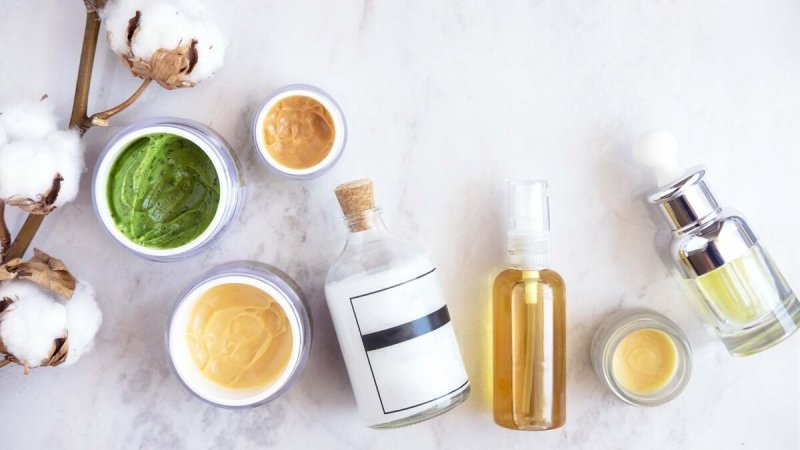As Josh Bloom, an organic chemist and head of the American Council on Science and Health, has written:
The divide between “natural” and “artificial” chemicals is meaningless – something many Americans do not know. The origin of a chemical is irrelevant. Your body cannot tell what is natural or synthetic – only the properties of the chemical matter.
Much of the debate over natural/artificial has played over food, fertilizers, pesticides and related subjects. But we can also look to skincare for an example demonstrating that what’s claimed to be “natural” is not necessarily better than the alternatives. In fact, “natural” ingredients are often less tested than their synthetic or “chemically-sounding” counterparts and can cause more problems for consumer safety and their skin health.
 Here is a case in point. Most cosmetic products require a good preservative system to keep them free of microbial contamination. Some of the most effective and non-irritating preservatives belong to the family of parabens (which, by the way, naturally occur in berries and other plants).
Here is a case in point. Most cosmetic products require a good preservative system to keep them free of microbial contamination. Some of the most effective and non-irritating preservatives belong to the family of parabens (which, by the way, naturally occur in berries and other plants).
Unfortunately, after reading misleading media reports about a study (conducted in 2004) that found parabens in breast cancer tissue, consumers deemed this family of preservatives undesirable. This was a classical case of “correlation does not mean causation”. Since then, multiple studies were done assessing parabens’ safety leading the EU’s Scientific Committee on Consumer Safety in 2011 to establish “the use of butylparaben and propylparaben as preservatives in finished cosmetic products as safe to the consumer, as long as the sum of their individual concentrations does not exceed 0.19%” (a typical concentration in a cosmetic product is 0.01%).
The news about the multiple studies confirming the safety of parabens as preservatives in skincare, unfortunately, did not make the headlines, so many consumers remained fearful of seeing them in their products. The fear was even reinforced by the companies that decided to get a competitive advantage out of it and advertise their products as paraben-free, switching their formulas to alternative, less tested and often more allergenic preservatives. As the result, consumers, in part reacting to the increasing number of dermatitis cased caused by these substitute preservatives, became wary of preservatives as such.
In this environment, many brands, by choice or by pressure from their market research insights, decided to to formulate with “natural” preservatives. The challenge for responsible cosmetic formulators it presents has been quite significant: after all, even the nature uses parabens to preserve the goodness of berries. Luckily, a new “all-natural” ingredient called radish ferment filtrate (aka kimchi filtrate) appeared on the market offering a great solution to the challenge. The ingredient has remarkable anti-bacterial properties and works as a decent preservative. Amazing – a vegetable goodness and product preservation in one! The ingredient has been widely adopted: according to the What’s In My Jar’s database, about 5% of leave-in skincare products sold in Sephora, Ulta and Amazon (US) today use it.
Scientists became excited to figure out what exactly was making the radish ferment work so well against microbes. To their disappointment, they discovered that the antimicrobial properties of the ferment were not due to the presence of some previously unknown plant peptide, but rather of salicylic acid and ammonium salts. What’s remarkable is that these compounds are not produced naturally by radish & cabbage, nor are they are products of fermentation. The scientists concluded that these compounds were over 20 000 year old, originated from petroleum-based precursors (that is, the “parent” chemicals of crude oil) and got into the plant roots through soil.
This peculiar origin of the preservation properties of the fermented radish filtrate does not make it less natural (crude oil is 100% of natural origin). It does make it more dangerous, though. Ammonia salts can irritate the skin and cause an allergic reaction. What’s even more dangerous is that, because of the plant origin of the preservative substance, it is difficult to know the exact amount of the ammonia salts and salicylic acid contained in each batch of it. In other words, if your product contains the Radish ferment filtrate, even the product manufacturer is unlikely to know exactly how much ammonia salts will be getting onto your skin.
One of the most disappointing parts of the whole story is that the study detailing the ammonia salt content in the ingredient has been published 4 years ago, in 2015. Skincare brands did not stop using the substance. To our knowledge, no safety assessment studies for the radish ferment filtrate followed the discovery, so, for now, it might be a good idea to avoid this preservative in your skincare.
The bottom line: while the plant-based ingredients today have an irrational appeal to many consumers, synthetic and “chemical-sounding” preservatives in cosmetics are safer than the alternatives that are marketed as “natural”.
Maria Semykoz is co-founder of What’s In My Jar. Follow her on Twitter @MariaSemykoz































